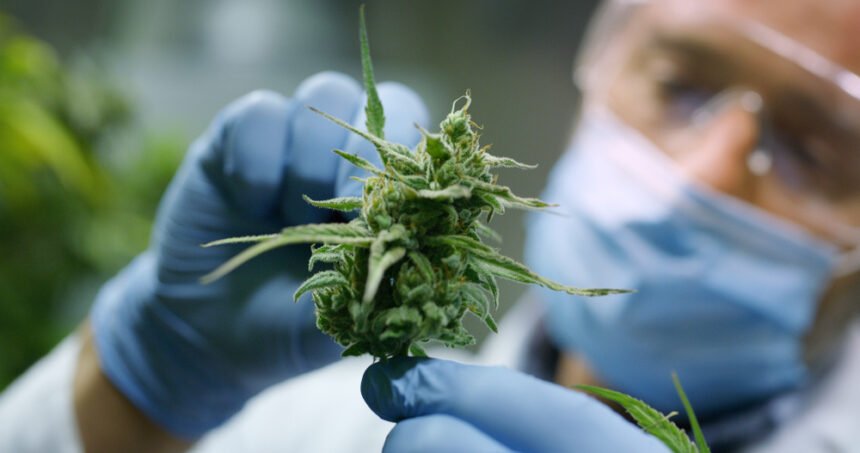Cannabis, also known as marijuana, is used as a medicine and a recreational substance in some states. However, while it is a widely discussed topic, not many individuals know the ins and outs of cannabis and what it is precisely capable of. When you look into it, it’s certainly a lot more complex than you may initially think, and there is no denying that it does have very significant benefits. They often depend on the specific strand, which is important to know since there are so many.
Below we are going to discuss what cannabis is exactly and the different benefits this plant can have. Interested in learning more? Then keep on reading!
What is it?
Cannabis itself is derived from the cannabis plant. The active ingredient of this is THC, which is psychoactive and alters brain function when consumed. During use, the individual may feel a sense of happiness and relaxation. However, there are also some side effects that may occur. This includes increased appetite, bloodshot eyes, and a dry mouth.
What is the anatomy of the cannabis plant?
While it might sound strange, cannabis plants can be male and female. However, females are highly desired as they produce large flowers that are rich in cannabinoids. These cannabinoids, which include THC, CBN, CBD, THCV, CBG, and CBC, are what stimulate the brain.
The other aspect is Terpenes, which are a significant compound. They have an impact on the different smells and flavors which come from the cannabis plant. From floral and sweet to more earthy tones.
What are the different strains?
Cannabis comes in a variety of different strains, and there are three main types that these are usually divided into. The strain you pick ultimately depends on what effect you desire, so it can be wise to look into them.
Indica Strains: These strains have a strong-body high, which helps assist with relaxation and sleep. Alongside this, they also help those with pain due to their “heavier” effects.
Sativa Strains: Known for a more uplifting sensation, Sativa strains can enhance creativity, making them popular for day-time use.
Hybrid Strains: These strains contain elements from both the Sativa and Indica. This causes the user to have an experience somewhere in the middle of them both.
How can you consume it?
While many people think that smoking is the only way to take cannabis, there are actually a variety of consumption methods. For instance, there are ingestible oils, tinctures, and a selection of edibles that you can purchase. You can even try out some gourmet weed recipes. Alongside this, there are also topicals that can be applied to the skin in the form of a gel or balm. This is perfect for localized relief, such as muscle aches or soreness.
If you’re thinking of getting started, it’s important to make sure that it is legal in your state to purchase. Heading online to a site like My Dyrect can be a good option, as most online stores have a range of different products available to suit your individual preferences. Whether it be in the form of an edible or flower.
What are the different benefits?
The main benefit of cannabis that is most talked about is its ability to relieve chronic pain. However, there are a variety of other advantages to be considered. Certain studies have noted that it can assist with weight loss, heals bones quicker, and can elevate symptoms associated with duel anxiety and depressive disorders.
What specific medical conditions can it help with?
While cannabis itself cannot treat anything fully, medical marijuana is commonly used to help assist with specific symptoms. Some medical conditions that it can help with include:
Cancer: While there is still much to be learned about cannabis and cancer, some studies have shown that it can help relieve vomiting and nausea from chemotherapy.
Alzheimer’s disease: Research into Alzheimer’s has shown that the anti-inflammatories in cannabis may fight the blain inflammation that leads to the disease.
Arthritis: Certain topicals containing THC and CBD can assist with joint pain caused by arthritis.
Inflammatory bowel disease: Helps by providing relief of pain for individuals with Crohn’s disease. It may also assist with inflammation in the intestines.
Post-Traumatic Stress: Research is being conducted on cannabis’s ability to control the “fight or flight response.” This can assist individuals who have gone through a trauma and may experience anxiety and depression as a result.
Diabetes: Studies by the American Alliance for Medical Cannabis have shown it can stabilize blood sugar and lower blood pressure.
Are there any side effects?
Like every drug or medicinal product we consume, there are always going to be side effects that may or may not occur. Because it is psychoactive, the quantity and the way you consume it can also affect this. For example, too high of a dose may worsen mental disorders, and smoking it can cause damage to your lungs.
Final Thoughts
By reading through the above, you can hopefully now have a better understanding of cannabis and how it can help us. While it’s clear that more research needs to be done into its capabilities, it’s interesting to think about what other benefits it may have in the future.

